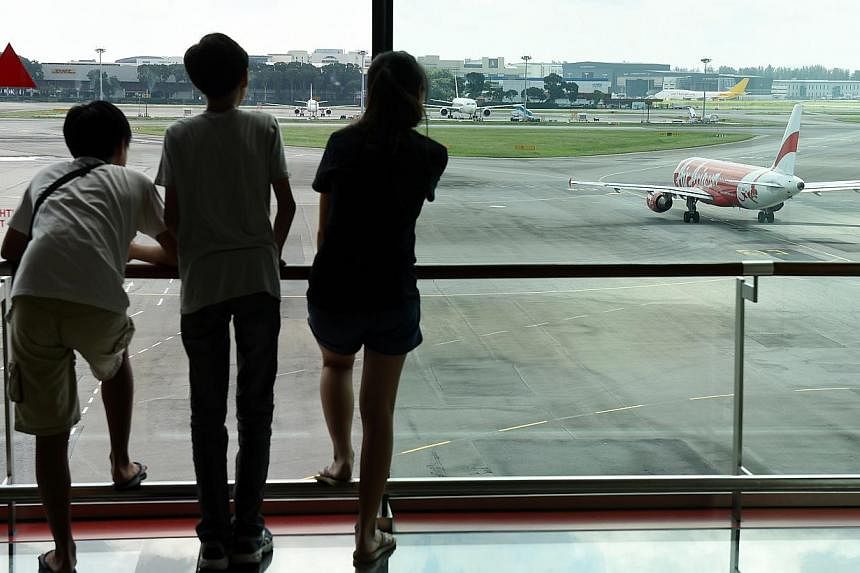The team behind Changi Airport's biggest and most challenging expansion to date has crossed a major milestone after more than two years - the planning stage for land preparation works.
This paves the way for actual groundwork to start next month on a third runway and eventually the future Terminal 5.
The mega passenger terminal, to be built on reclaimed land currently separated from the main airport by Changi Coast Road, will be Changi's biggest, with a capacity to process up to 50 million passengers a year.
This is more than T2 and T3 put together.
A spokesman for the Transport Ministry told The Straits Times that planning for the land preparation works for the airport development has been completed. The ministry has since called a tender to appoint a contractor to do the actual work on the ground, which will start soon after the contract is awarded next month, he said.
It will be a mammoth task to prepare the 1,000ha plot of land - slightly smaller than the current airport premises - for construction works to begin, particularly since the soil conditions were poorer than expected, The Straits Times understands.
This will involve clearing trees and other vegetation on the existing site, diverting Changi Coast Road, strengthening the soil to minimise ground subsidence, and adding or removing soil to raise or lower various parts of the site to the required elevations, the ministry said.
To manage the huge plot, works will be carried out in more than 70 phases, some concurrently.
Mr Chong Kee Sen, president of The Institution of Engineers, Singapore, said the time that has gone into planning works is to be expected given the complexity and scale of the project.
If works are not planned and carried out properly, poor underlying soil conditions can result in inadequate strength to support the applied loads, among other risks, he said.
To prevent this, engineers rely on various measures such as compaction, he said. This is a process where stress is applied to soil to make it more dense.
With work to start soon, the target is for Changi Airport to operate a three-runway system, which includes a network of taxiways, by around the early 2020s.
The mega airport project, announced two years ago by the Transport Ministry, is part of Singapore's plans to grow the aviation hub. From 66 million now, Changi will be able to handle 85 million passengers by 2018, when the future T4 is ready and T1 expanded. By the time T5 starts operating, the capacity will hit 135 million passengers a year.
With demand for air travel in the Asia-Pacific expected to outpace growth elsewhere in the coming years, countries are racing to ramp up airport infrastructure and other related services.
China, for one, is planning for more than 100 airports in the next decade, and India, more than 60, according to industry consultancy Frost & Sullivan Asia-Pacific in a recent report.
Mr Chris De Lavigne, a global vice-president at Frost & Sullivan, said: "Through the next 10 years, we see more than 350 new airports in the Asia-Pacific and the investment cost will be well over US$100 billion (S$125 billion)."

